11 Inspiring Places Around the U.S. to Learn More About Black History
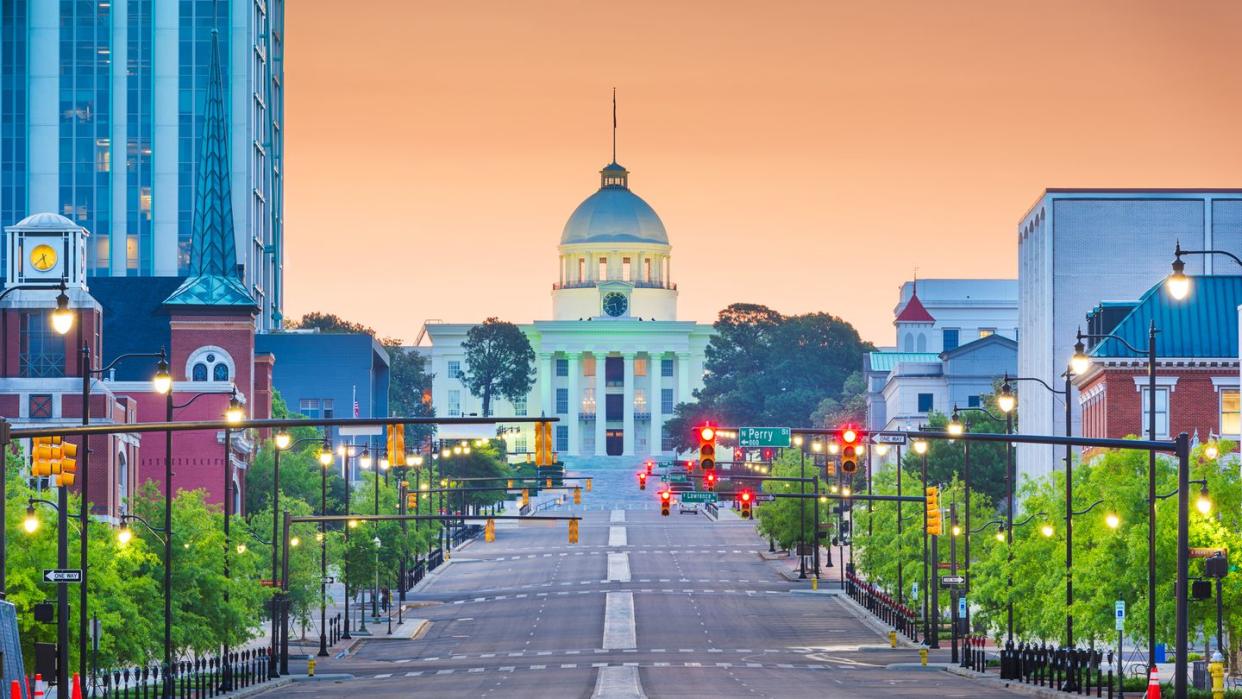
- Oops!Something went wrong.Please try again later.
- Oops!Something went wrong.Please try again later.
When it comes to experiencing Black history in the United States, it’s nearly impossible to narrow it down to just a few destinations. The truth is that Black history and culture is deeply woven throughout every city and hamlet across the country. That said, there are significant eras like the Civil Rights Movement, the Harlem Renaissance and Reconstruction that stand out in our nation’s memory as times when African Americans fought for basic human rights, created society-shifting works of art and made history in the process.
This Black history month, while it’s important to stand in reverence at the places where history was made, it’s also important to support the Black-owned businesses and Black-led preservation efforts that exist today in these destinations. Below, we detail 11 places to experience Black history and culture in all its vibrance, some in places you may expect, while others that may surprise you.
Memphis, Tenn
Memphis is one of those cities where Black culture shines. It’s everywhere; splashed across beautiful murals throughout the city, in the hip hop and blues heard in lounges and of course, the incredible soul food. The city is also infamously where Dr. Martin Luther King Jr. was assassinated during the height of the Civil Rights Movement, and his last moments as well as the decades long struggle for civil rights is immortalized at the National Civil Rights Museum at the Lorraine Motel. The powerful museum is a difficult but necessary experience, charting both the pain and pride of African Americans throughout enslavement, the violence of Jim Crow and the celebratory Black is Beautiful movement. A visit to nearby Clayborn Temple and I Am A Man plaza, where sanitation strikers gathered in 1968 in preparation for the march to be led by Dr. King, is a must-see, especially to honor the 1300 names engraved on the sculpture. On your trip, don’t miss the fried catfish plate at The Four Way, one of the only restaurants to serve Black and white diners during the 1960s, and a carefully crafted cup of coffee at the Anti-Gentrification Cxffee Club.
New Orleans, Louisiana
Black history in New Orleans starts in Tremé, the only place in America during the slavery era where Black people and other people of color purchased land and homes with regularity since 1783. All Bout Dat Tours offers tours through Tremé, visiting Congo Square, where the enslaved often held healing drum circles (and where jazz was created); Louis Armstrong Park, where you’ll find several sculptures honoring NOLA music history; and a visit to various Black-owned businesses like Community Book Center and Domino Sound and Record Shack on Bayou Road. For the best in Creole cuisine, stop by the historic Dooky Chase’s restaurant or The Munch Factory (a favorite of Beyonce and Jay-Z). Rest your head at the newly restored Dew Drop Inn (opening March 1), a legendary Black-owned music venue that hosted musicians like Ray Charles and Fats Domino, is now a mid-century modern 17-room boutique hotel with rooms named after the icons that walked its hallowed halls.
New York, New York
The Apollo Theater. The Schomburg Center for Research in Black Culture. The Studio Museum. There are so many incredible places to experience Black history and culture in New York City, and those few are all in one neighborhood. Harlem is a globally-respected cradle of Black culture, mainly due to the glamourous cultural explosion that was the Harlem Renaissance during the 1920s and 1930s. The era and neighborhood redefined Black identity through music, literature and art, and the effects of the movement are still felt today throughout New York’s five boroughs. For a taste of the past, visit the Louis Armstrong House Museum in Queens to view his personal collection of 1600 recordings, and back in Harlem, take a stroll through the neighborhood’s stunning brownstone-lined streets, particularly Strivers’ Row, a collection of beautifully-preserved 19th-century townhouses popular among Harlem’s Black elite of the 1920s.
Tulsa, OK
Tulsa is home to one of the most important Black landmarks in the United States: the historic Greenwood District once known as Black Wall Street. In 1921, the thriving Black business district was destroyed by a violent white mob in 1921 during the horrific Tulsa Race Massacre, and the quest for reconciliation and reparations has been a long and constant fight. However, as a visitor, there are several ways to understand the legacy of this district, especially at Greenwood Rising, where guests can interactively explore the district before and after the massacre. At the Greenwood Cultural Center, visitors can tour the Mabel B. Little Heritage House, the only house built in the Greenwood District from the 1920s that still remains. Part of honoring Black Wall Street is to visit the businesses carrying on its legacy, like the Black Wall Street Liquid Lounge coffee shop and Fulton Street Books & Coffee which features majority BIPOC and marginalized authors.
Topeka, Kansas
This year on May 17th marks the 70thanniversary of the landmark Brown v. Board of Education of Topeka Supreme Court decision that made racial segregation illegal in U.S. public schools. The Topeka community plans to commemorate the historic event with a homecoming celebration luncheon for former students and educators of Topeka’s four former African American elementary schools. Visitors can experience Brown v Board of Education National Historic Park, where one of the former schools, Monroe Elementary, has been transformed into a museum that details the case and its legacy. Walk through the school that feels frozen in time with both “White” and “Colored” signs to mark the period of segregation.
Montgomery, Alabama
For many, Montgomery is considered the birthplace of America’s 20th century Civil Rights Movement thanks to the courage of Rosa Parks and the Montgomery bus boycott of 1955. It’s also where Dr. Martin Luther King Jr. made a national name for himself as pastor of Dexter Avenue King Memorial Baptist Church, where he served from 1954 to 1960. The church, a key stop on the National Civil Rights Trail, was also the meeting site to organize the boycott. There’s nearly an overwhelming amount of Black history experiences to have in Montgomery, from the Rosa Parks Museum to The Legacy Museum and Freedom Rides Museum, but each and every one is integral to understanding the continuing struggle for equal rights in this country. A tour with Montgomery Tours, led by self-proclaimed “child of the Civil Rights Movement” and lifelong resident, Jake Williams, is a great place to start. No trip to the deep south is complete without excellent food, so make sure to fuel up every morning at Greg’s Breakfast Bar.
Washington, D.C
Any Black culture-centered visit to Washington, D.C. has to start at what locals lovingly call “The Blacksonian,” also known as the National Museum of African American History and Culture located on the National Mall. Since its opening in 2016, this museum has swiftly become one of the most popular in the Smithsonian Institution collection, charting the richness and diversity of the African American experience. Deeper into the heart of the city, take a stroll along “Black Broadway” on a walking tour led by local author and journalist, Briana Thomas to see vibrant murals and visit celebrated spots like Lincoln and Howard Theaters, and Ben’s Chili Bowl restaurant. Want an insider tip? DC’s monuments are stunning at night, and the white granite-made Martin Luther King, Jr. Memorial absolutely glows in the evening.
Birmingham, Alabama
Although Montgomery may have been the place where the Civil Rights Movement began, Birmingham was its center. The city saw some of the most violent moments of the era, including at the Sixteenth Street Baptist Church where four young girls were killed in a racist bombing while attending Sunday school. This and other events galvanized the movement on a national scale, and today, places like the Birmingham Civil Rights Institute and moving sculptures of peaceful demonstrators being attacked by police dogs in Kelly Ingram Park work to ensure that visitors never forget what happened there. Also in Birmingham’s Civil Rights District is the A.G. Gaston Hotel, the only hotel to offer first-class lodging and dining to African American travelers from 1954 onward. Visitors can now tour the beautifully restored space, a favorite meeting place for several civil rights leaders.
Atlanta, Georgia
Since the mid-19thcentury, Atlanta has been a center of Black higher education, entrepreneurship and culture. Celebrated historically Black colleges, Morehouse College for men and Spelman College for women, are based there, and have produced some of America’s foremost leaders including Dr. Martin Luther King, Jr., Senator Raphael Warnock, novelist Alice Walker and politician Stacey Abrams. Dr. King was also born and raised in Atlanta, and visitors can explore his family church of Ebenezer Baptist Churchand visit his gravesite at The King Center. One lesser known museum in Atlanta that should be on everyone’s list is the Madame C.J. Walker Museum, all about the nearly unbelievable story of the first self-made millionaire in the United States.
Lowcountry, South Carolina
South Carolina’s Lowcountry includes the popular destinations of Charleston, Bluffton and Hilton Head Island, all places significant to the Gullah Geechee people, descendants of West and Central Africans who were enslaved and bought to the lower Atlantic states to work on coastal plantations. Because their enslavement was relatively isolated, they maintained many of their indigenous African traditions that are still alive today. Take a Gullah Heritage Tour in Hilton Head to see family compounds, former schoolhouses and Mitchelville Freedom Park, the first self-governed freepersons town in the United States. Gullah cuisine is also an interesting mix of southern staples and the freshest seafood, so make sure to try it at Ruby Lee’s on Hilton Head Island.
Maryland’s Eastern Shore
Maryland’s Eastern Shore is home to one of the most interesting historic byways in the country dedicated to an American hero. The Harriet Tubman Bywaywinds for 125 miles through Maryland and Delaware before ending in Philadelphia, but many of the sites detailing Tubman’s early life of enslavement, and where she returned to bring others to freedom are in Maryland. Must visit stops include The Harriet Tubman Underground Railroad Visitor Center that’s filled with exhibits and borders Blackwater National Wildlife Refuge, which was once the same terrain Tubman had to traverse on her journeys. There’s also Bucktown General Store, where as a teenager Tubman received a head injury from a slave overseer that affected her for the rest of her life. Because Maryland is home to the majority of stops on the byway, we suggest you bunk down at The Wildset hotel in nearby St. Michaels along the Chesapeake Bay.
When it comes to experiencing Black history in the United States, it’s nearly impossible to narrow it down to just a few destinations. The truth is that Black history and culture are deeply woven throughout every city and hamlet across the country. That said, there are significant eras such as the Civil Rights Movement, the Harlem Renaissance, and Reconstruction that stand out in our nation’s memory as times when African Americans fought for basic human rights, created society-shifting works of art, and made history in the process.
This Black History Month, while it’s important to stand in reverence at the places where history was made, it’s also important to support the Black-owned businesses and Black-led preservation efforts that exist today in these destinations. Below, we detail 11 places to experience Black history and culture in all its vibrance, some in places you may expect, while others that may surprise you. Here, the best places to travel to learn about black history.
Memphis, Tennessee
Memphis is one of those cities where Black culture shines. It’s everywhere; splashed across beautiful murals throughout the city, in the hip hop and blues heard in lounges and, of course, the incredible soul food. The city is also infamously where Dr. Martin Luther King Jr. was assassinated during the height of the Civil Rights Movement. His last moments as well as the decades-long struggle for civil rights are immortalized at the National Civil Rights Museum at the Lorraine Motel. The powerful museum is a difficult but necessary experience, charting both the pain and pride of African Americans throughout enslavement, the violence of Jim Crow and the celebratory Black is Beautiful movement.
Nearby Clayborn Temple and I Am A Man plaza, where sanitation strikers gathered in 1968 in preparation for the march to be led by Dr. King, are both must-sees, especially to honor the 1300 names engraved on the sculpture. On your trip, don’t miss the fried catfish plate at The Four Way, one of the only restaurants to serve Black and white diners during the 1960s, and a carefully crafted cup of coffee at the Anti-Gentrification Cxffee Club.
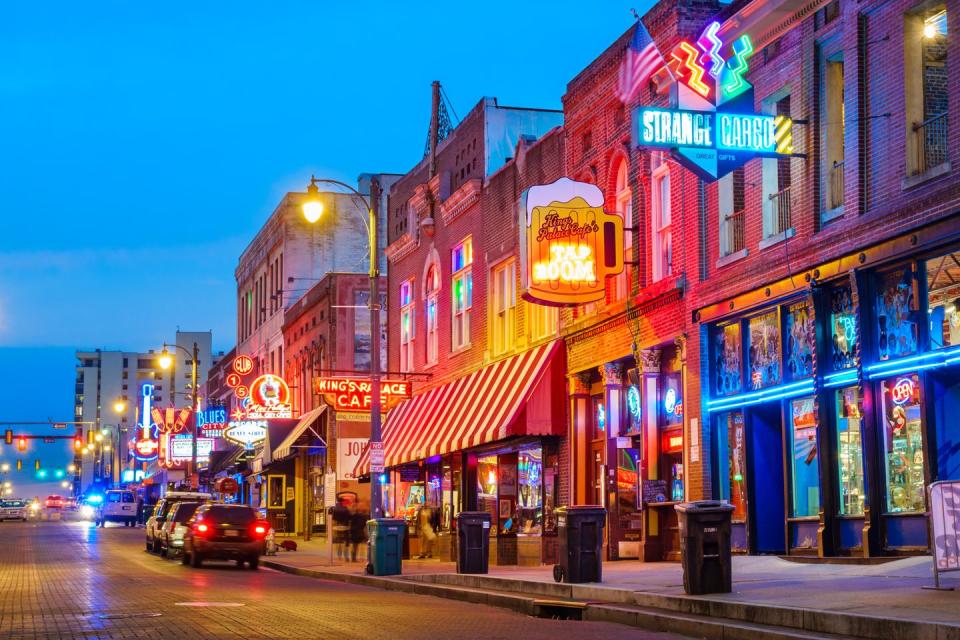
New Orleans, Louisiana
Black history in New Orleans starts in Tremé, the only place in America during the slavery era where Black people and other people of color purchased land and homes with regularity since 1783. All Bout Dat Tours offers tours through Tremé, visiting Congo Square, where the enslaved often held healing drum circles (and where jazz was created); Louis Armstrong Park, where you’ll find several sculptures honoring NOLA's musical history; and a visit to various Black-owned businesses like Community Book Center and Domino Sound and Record Shack on Bayou Road.
For the best in Creole cuisine, stop by the historic Dooky Chase’s restaurant or The Munch Factory (a favorite of Beyonce and Jay-Z). Rest your head at the newly restored Dew Drop Inn (opening March 1). The legendary Black-owned music venue (that hosted musicians like Ray Charles and Fats Domino) is now a mid-century modern 17-room boutique hotel with rooms named after the icons who walked its hallowed halls.
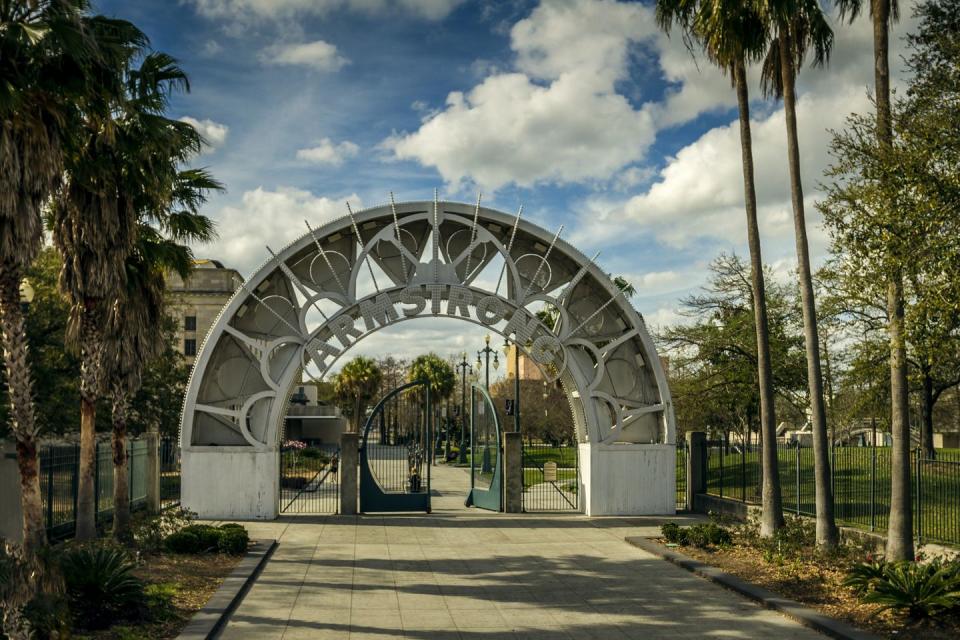
New York, New York
The Apollo Theater. The Schomburg Center for Research in Black Culture. The Studio Museum. There are so many incredible places to experience Black history and culture in New York City, and those few are all in one neighborhood. Harlem is a globally respected cradle of Black culture, mainly due to the glamorous cultural explosion that was the Harlem Renaissance during the 1920s and 1930s.
The era and neighborhood redefined Black identity through music, literature and art, and the effects of the movement are still felt today throughout New York’s five boroughs. For a taste of the past, visit the Louis Armstrong House Museum in Queens to view his personal collection of 1600 recordings, and back in Harlem, take a stroll through the neighborhood’s stunning brownstone-lined streets, particularly Strivers’ Row, a collection of beautifully preserved 19th-century townhouses popular among Harlem’s Black elite of the 1920s.
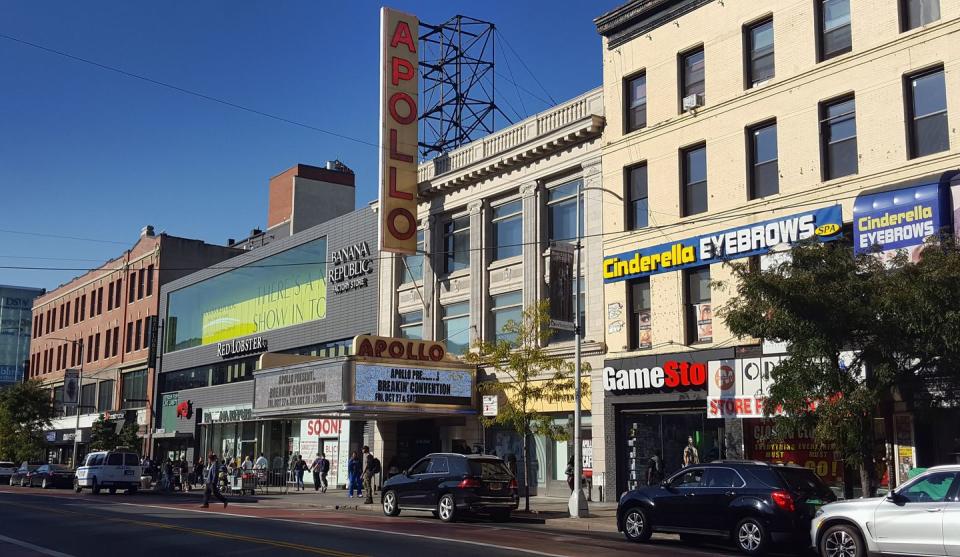
Tulsa, Oklahoma
Tulsa is home to one of the most important Black landmarks in the United States: the historic Greenwood District once known as Black Wall Street. In 1921, the thriving Black business district was destroyed by a violent white mob in 1921 during the horrific Tulsa Race Massacre. As a visitor, there are several ways to understand the legacy of this district, especially at Greenwood Rising, where guests can interactively explore the district before and after the massacre.
At the Greenwood Cultural Center, visitors can tour the Mabel B. Little Heritage House, the only house built in the Greenwood District from the 1920s that still remains. Part of honoring Black Wall Street is to visit the businesses carrying on its legacy, like the Black Wall Street Liquid Lounge coffee shop and Fulton Street Books & Coffee which features majority BIPOC and marginalized authors.
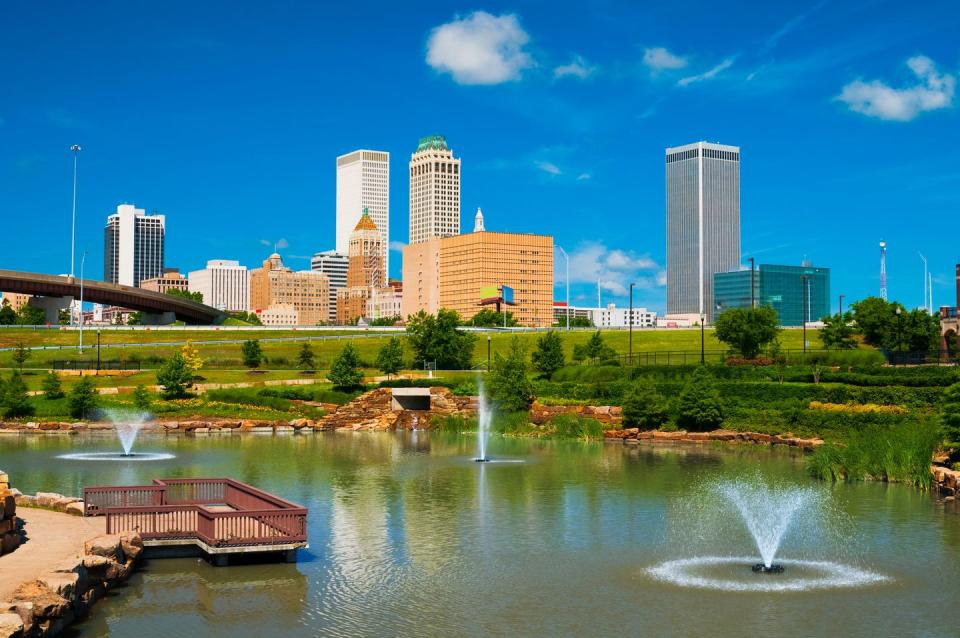
Topeka, Kansas
May 17th, 2o24 marks the 70th anniversary of the landmark Brown v. Board of Education of Topeka Supreme Court decision that made racial segregation illegal in U.S. public schools. The Topeka community plans to commemorate the historic event with a homecoming celebration luncheon for former students and educators of Topeka’s four former African American elementary schools.
Visitors can experience Brown v Board of Education National Historic Park, where one of the former schools, Monroe Elementary, has been transformed into a museum that details the case and its legacy. Walk through the school that feels frozen in time with both “white” and “colored” signs to mark the period of segregation.
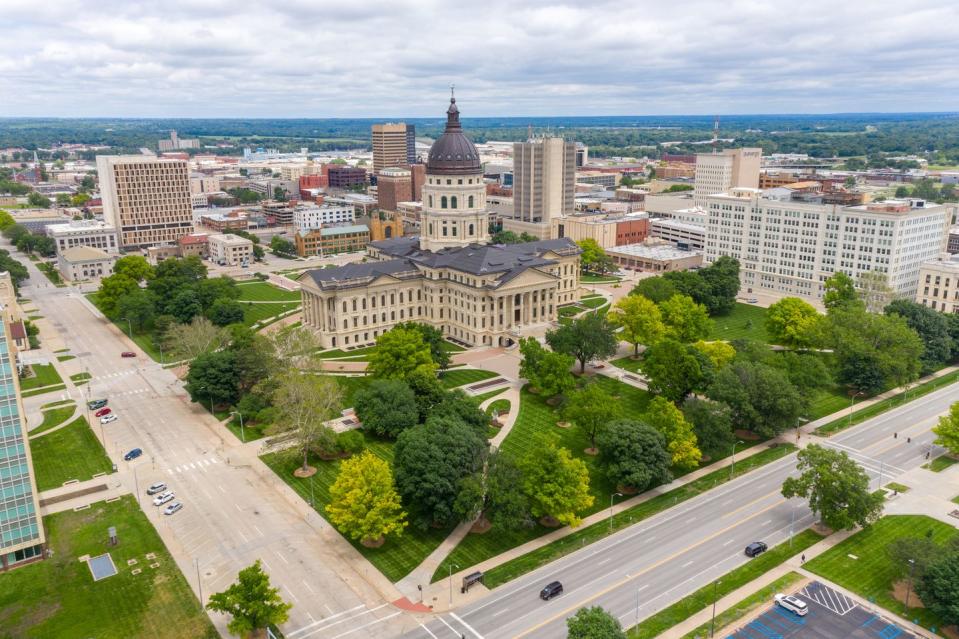
Montgomery, Alabama
For many, Montgomery is considered the birthplace of America’s 20th-century Civil Rights Movement, thanks to the courage of Rosa Parks and the Montgomery bus boycott of 1955. It’s also where Dr. Martin Luther King Jr. made a national name for himself as pastor of Dexter Avenue King Memorial Baptist Church, where he served from 1954 to 1960. The church, a key stop on the National Civil Rights Trail, was also the meeting site to organize the boycott.
There’s nearly an overwhelming amount of Black history experiences to have in Montgomery, from the Rosa Parks Museum to The Legacy Museum and Freedom Rides Museum, but each and every one is integral to understanding the continuing struggle for equal rights in this country. A tour with Montgomery Tours, led by self-proclaimed “child of the Civil Rights Movement” and lifelong resident, Jake Williams, is a great place to start. No trip to the deep south is complete without excellent food, so make sure to fuel up every morning at Greg’s Breakfast Bar.
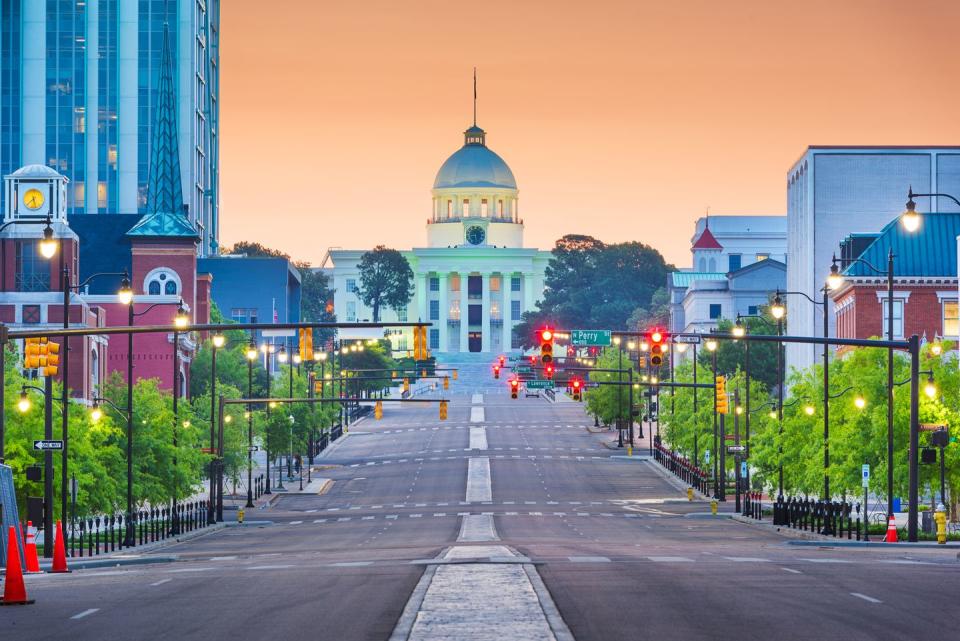
Washington, D.C.
Any Black culture-centered visit to Washington, D.C. has to start at what locals lovingly call “The Blacksonian,” also known as the National Museum of African American History and Culture located on the National Mall. Since its opening in 2016, this museum has swiftly become one of the most popular in the Smithsonian Institution collection, charting the richness and diversity of the African American experience.
Deeper into the heart of the city, take a stroll along “Black Broadway” on a walking tour led by local author and journalist, Briana Thomas to see vibrant murals and visit celebrated spots like Lincoln and Howard Theaters, and Ben’s Chili Bowl restaurant. Want an insider tip? D.C.’s monuments are stunning at night, and the white granite-made Martin Luther King, Jr. Memorial absolutely glows in the evening.
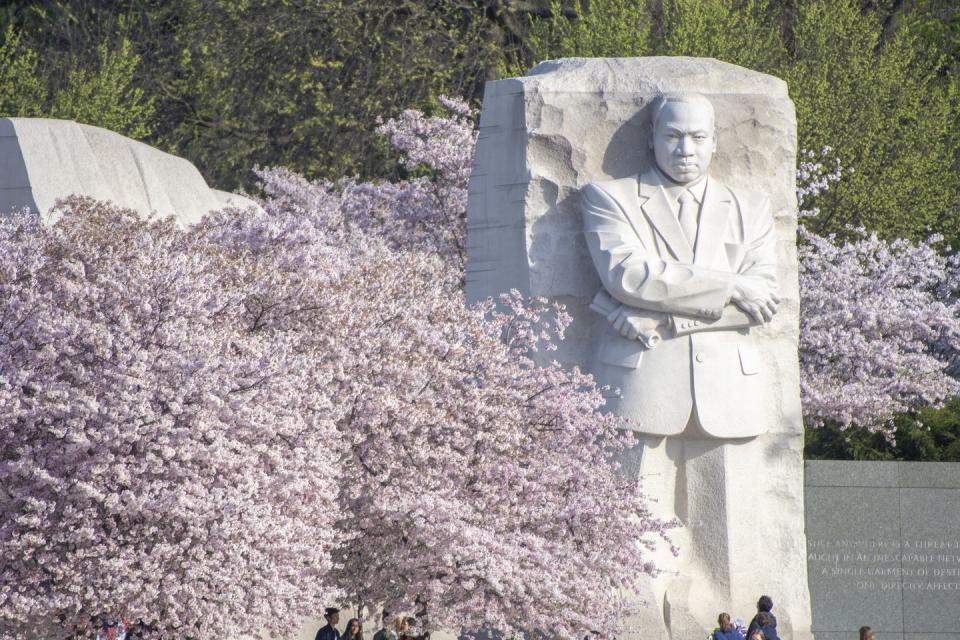
Birmingham, Alabama
Although Montgomery may have been the place where the Civil Rights Movement began, Birmingham was its center. The city saw some of the most violent moments of the era, including at the Sixteenth Street Baptist Church where four young girls were killed in a racist bombing while attending Sunday school. This and other events galvanized the movement on a national scale, and today, places like the Birmingham Civil Rights Institute and moving sculptures of peaceful demonstrators being attacked by police dogs in Kelly Ingram Park work to ensure that visitors never forget what happened there.
Also in Birmingham’s Civil Rights District is the A.G. Gaston Hotel, the only hotel to offer first-class lodging and dining to African American travelers from 1954 onward. Visitors can now tour the beautifully restored space, a favorite meeting place for several civil rights leaders.
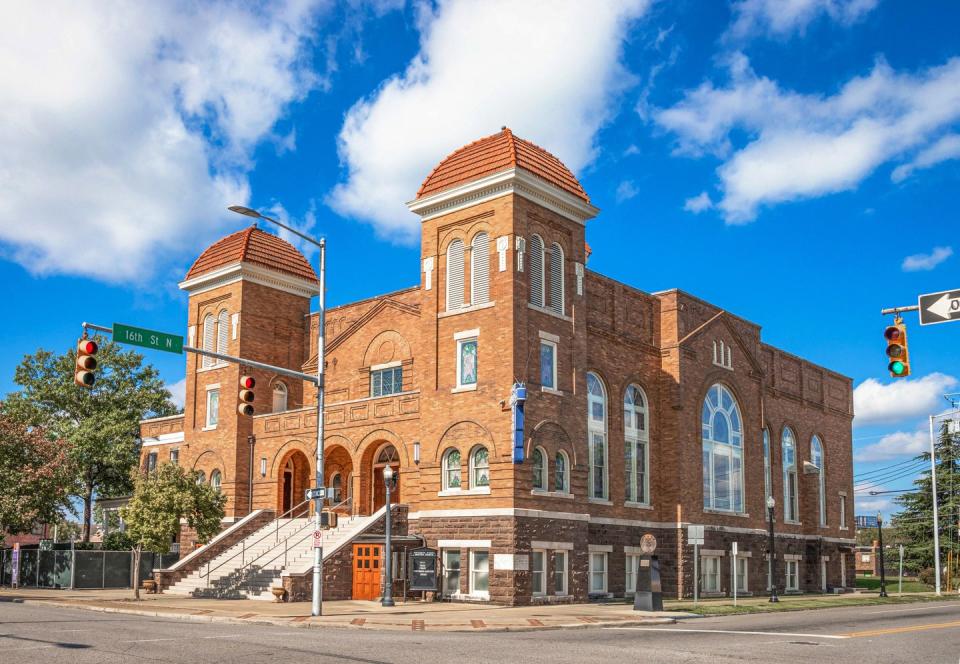
Atlanta, Georgia
Since the mid-19th century, Atlanta has been a center of Black higher education, entrepreneurship and culture. Celebrated historically Black colleges, Morehouse College for men and Spelman College for women, are based there, and have produced some of America’s foremost leaders including Dr. Martin Luther King, Jr., Senator Raphael Warnock, novelist Alice Walker and politician Stacey Abrams.
Dr. King was also born and raised in Atlanta, and visitors can explore his family church of Ebenezer Baptist Church and visit his gravesite at The King Center. One lesser-known museum in Atlanta that should be on everyone’s list is the Madame C.J. Walker Museum, all about the nearly unbelievable story of the first self-made millionaire in the United States.
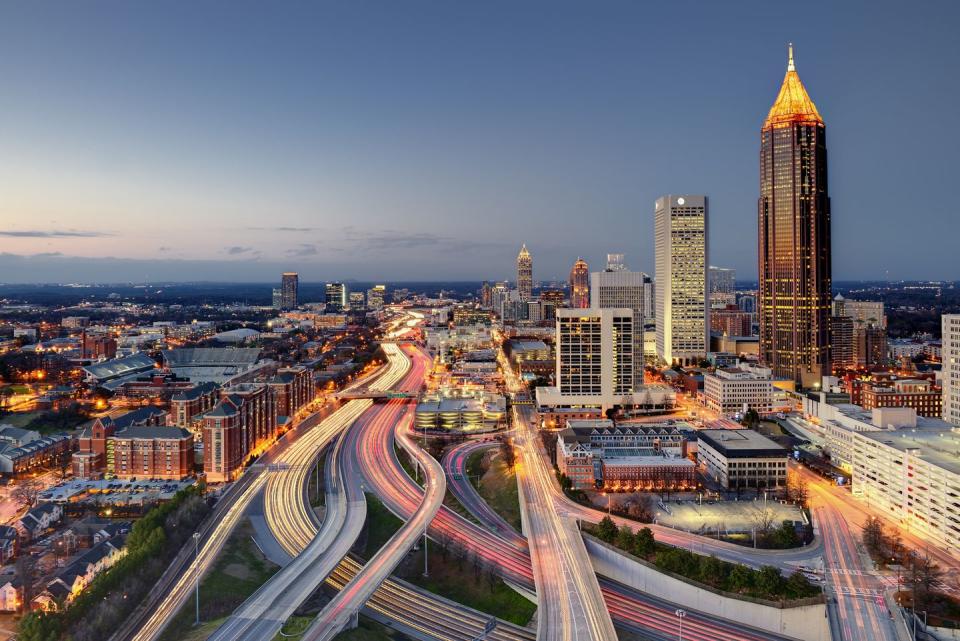
Lowcountry, South Carolina
South Carolina’s Lowcountry includes the popular destinations of Charleston, Bluffton and Hilton Head Island, all places significant to the Gullah Geechee people, descendants of West and Central Africans who were enslaved and bought to the lower Atlantic states to work on coastal plantations. Because their enslavement was relatively isolated, they maintained many of their indigenous African traditions that are still alive today.
Take a Gullah Heritage Tour in Hilton Head to see family compounds, former schoolhouses and Mitchelville Freedom Park, the first self-governed freepersons town in the United States. Gullah cuisine is also an interesting mix of southern staples and the freshest seafood, so make sure to try it at Ruby Lee’s on Hilton Head Island.
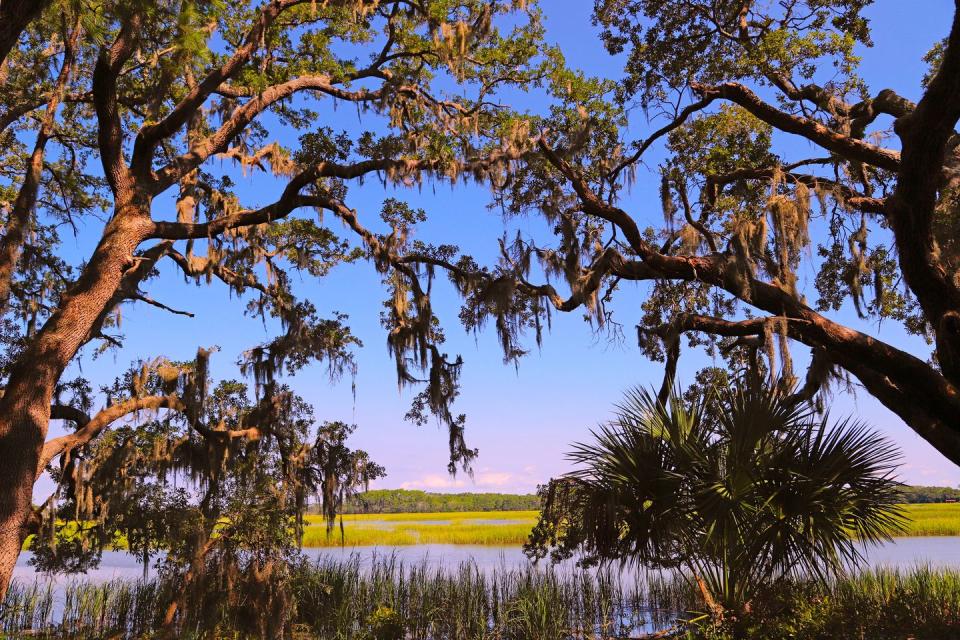
Maryland’s Eastern Shore
Maryland’s Eastern Shore is home to one of the most interesting historic byways in the country dedicated to an American hero. The Harriet Tubman Byway winds for 125 miles through Maryland and Delaware before ending in Philadelphia, but many of the sites detailing Tubman’s early life of enslavement and where she returned to bring others to freedom are in Maryland.
Must-visit stops include The Harriet Tubman Underground Railroad Visitor Center that’s filled with exhibits and borders Blackwater National Wildlife Refuge, which was once the same terrain Tubman had to traverse on her journeys. There’s also Bucktown General Store, where as a teenager Tubman received a head injury from a slave overseer that affected her for the rest of her life. Because Maryland is home to the majority of stops on the byway, we suggest you bunk down at The Wildset hotel in nearby St. Michaels along the Chesapeake Bay.
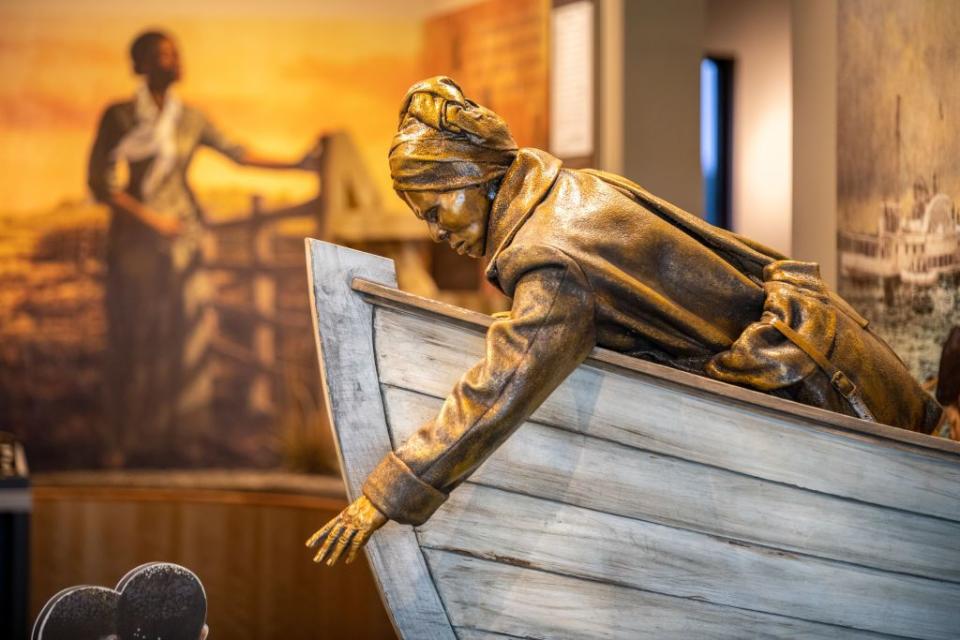
You Might Also Like

